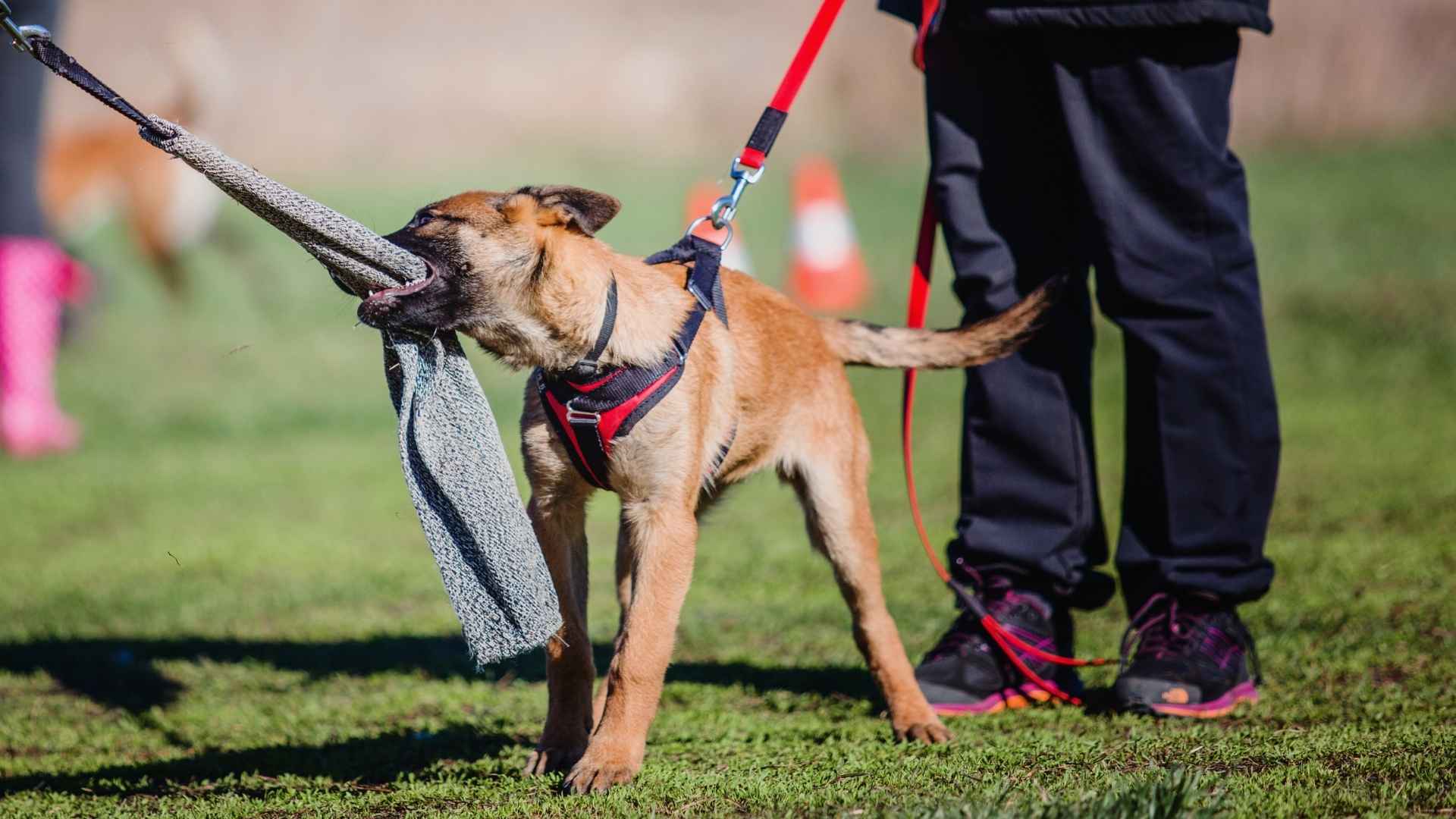We all adore our dogs for their goofy grins, wagging tails, and endless snuggles—but behind those sweet, soulful eyes, some breeds carry a powerful instinct to protect. While any dog can be loyal and affectionate, certain breeds have been purposefully developed over generations to guard, defend, and, when necessary, attack.
These dogs are not just companions—they’re natural-born protectors. Their courage, confidence, and devotion make them both incredible guardians and, at times, a liability in the wrong hands. Lets take a closer look at the world of attack dog breeds—unpacking what fuels their protective behavior, how their personalities differ from more passive breeds, and the bite statistics that often land them in the spotlight.
Whether you’re considering owning a protective breed or simply want to understand their instincts better, this guide will walk you through the facts—without the fear-mongering.
Attack Dog Breeds
1. Pit Bulls
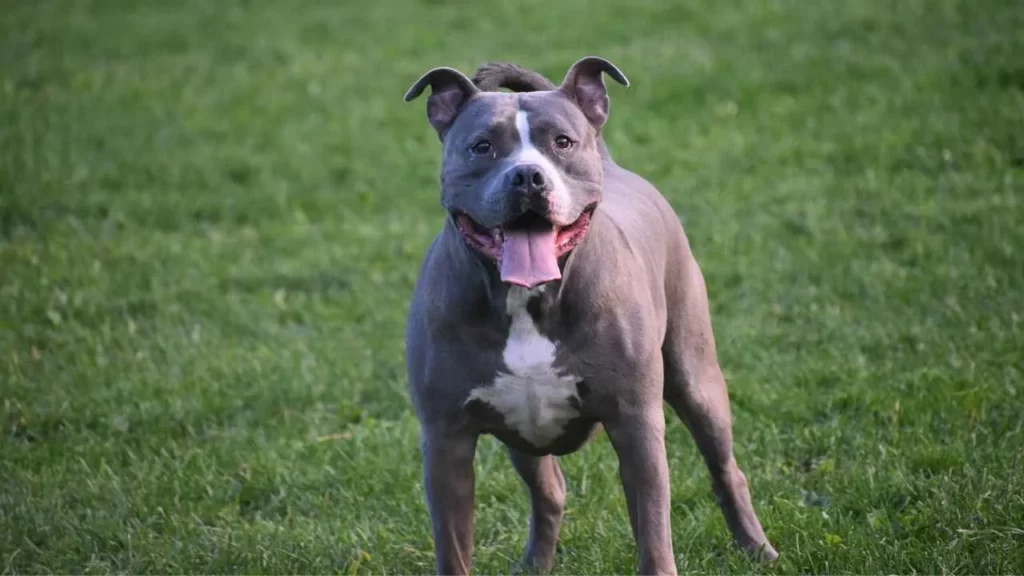
For many of us, dogs are loyal companions, beloved members of the family. But some breeds carry a reputation that raises serious concerns—pit bulls top the list of most dangerous dog breeds.
Known for their strength and tenacity, these dogs have a complicated, long history rooted in blood sports like bull-baiting and dog fighting. Though bull-baiting was banned in the early 1800s, pit bulls were later bred for their drive and fearlessness in dog-fighting arenas.
It’s not just a legend—pit bulls are physically built for intensity. Their strong bite force is estimated at over 235 PSI, and when they bite, they often hold and shake, causing deeper, more damaging wounds than typical dog bites.
Their muscular structure and strong jaws give them an edge that, when triggered, can be dangerous, especially if they’re not properly trained or restrained.
Nature, Nurture… and Negligence
While genetics play a part, the bigger issue often lies with owners who underestimate their dog’s potential for harm. Many attacks occur due to:
Off-leash roaming
Poorly secured yards or kennels
Ignored signs of prior aggression
Denial about the dog’s risk factor
Proper training and responsibility are essential when owning any powerful breed, but too often, that’s where things fall apart.
The Alarming Numbers
According to DogsBite.org, between 2005 and 2021, pit bulls were responsible for:
66% of fatal dog attacks in the U.S.
Over 570 deaths, even though they make up only 6% of the total dog population
Even the CDC and AVMA acknowledge that pit bulls and Rottweilers account for the majority of dog bite-related fatalities.
Real-Life Tragedies & The Aftermath
Several recent attacks highlight the serious consequences. From a Bronx man fatally mauled by three pit bulls to a terrifying supermarket rampage in NYC where multiple people were injured, these aren’t isolated incidents—they’re painful reminders of what can happen when strong, aggressive dogs aren’t controlled.
2. Rottweilers
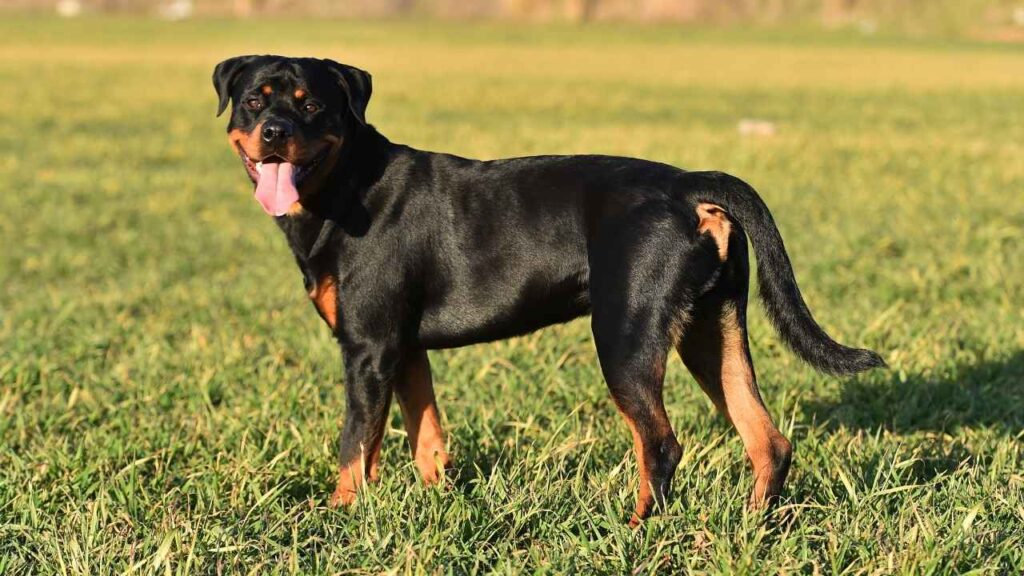
Rottweilers often get labeled as aggressive, but the reality is far more nuanced. These powerful dogs aren’t inherently dangerous—they’re protective, loyal, and deeply devoted to their families. Like any breed, how a Rottweiler behaves largely depends on their environment, training, and socialization.
In fact, studies suggest that only 9% of a dog’s behaviour is linked to its breed, meaning most behavioural traits come down to how a dog is raised, not its DNA.
Originally bred as working dogs, Rottweilers were used to drive cattle and guard property, so protective instincts are part of their heritage. This doesn’t make them mean-spirited; it simply means they’re naturally alert and ready to defend their home if needed. With the right training and socialization from a young age, a Rottweiler can be a gentle, affectionate companion.
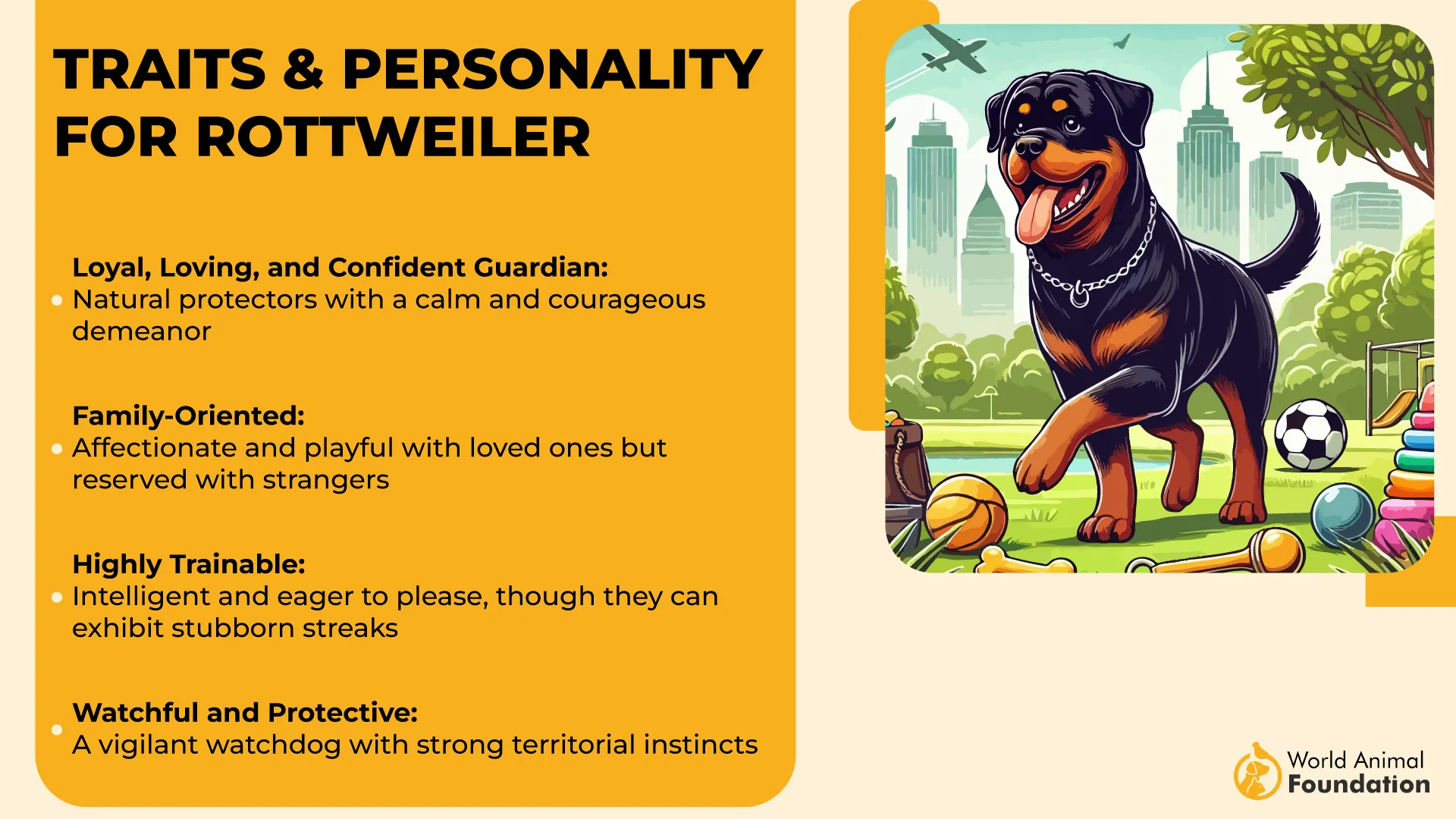
Strength and Size Matter
There’s no denying it—Rottweilers are big, strong dogs. Males can weigh up to 125 pounds, and their solid, muscular build gives them impressive power. This strength becomes dangerous only when paired with poor training or a lack of control. Because of their physicality, a Rottweiler can unintentionally cause harm if not well-trained or properly managed.
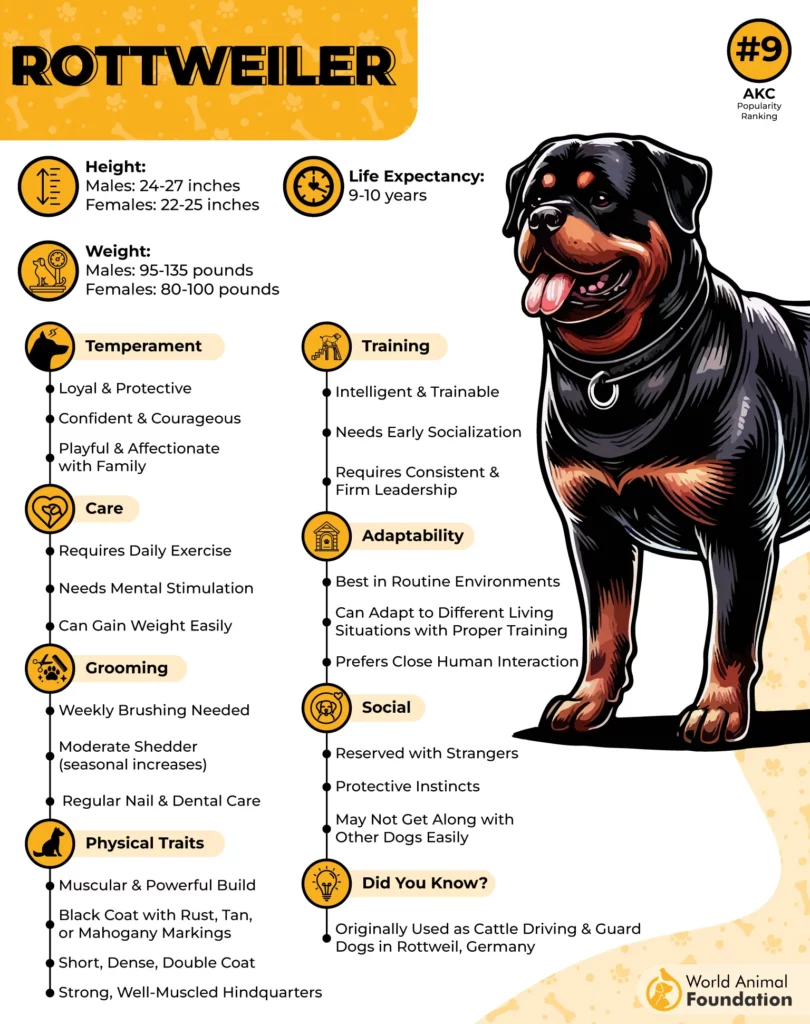
What the Dog Bite Statistics Say
Between 2005 and 2019, Rottweilers were responsible for nearly 10% of fatal dog attacks in the U.S., ranking second after pit bulls. While this sounds alarming, the numbers don’t tell the whole story. Most of these incidents involve dogs that weren’t properly trained, socialized, or contained by their owners.
Most Rottweiler-related incidents happen due to inadequate training or a lack of social boundaries. These dogs need confident, consistent leadership from an early age. Socialization should begin in puppyhood so they learn to feel safe around strangers, other animals, and new environments.
3. German Shepherds

German Shepherds are large, muscular dogs standing around two feet tall at the shoulder. One of their defining features is their powerful jaws with a scissor-like bite, which can cause serious injuries if they ever attack. While these dogs aren’t inherently dangerous, their size and bite strength make them capable of inflicting both physical and emotional trauma.
According to the CDC, German Shepherds rank third in dog-related fatalities. However, this doesn’t necessarily mean they’re the most aggressive breed—it reflects their popularity and physical capacity. When a dog of this size bites, it tends to do more damage, which can skew the statistics.
Are German Shepherds Naturally Aggressive?
Despite their reputation, German Shepherds are not naturally aggressive. They are intelligent, alert, and protective, but not quick to attack without cause. Unlike sociable breeds that greet strangers with enthusiasm, German Shepherds are more reserved. That doesn’t make them dangerous—it simply means they need proper guidance to learn what’s safe and what’s not.
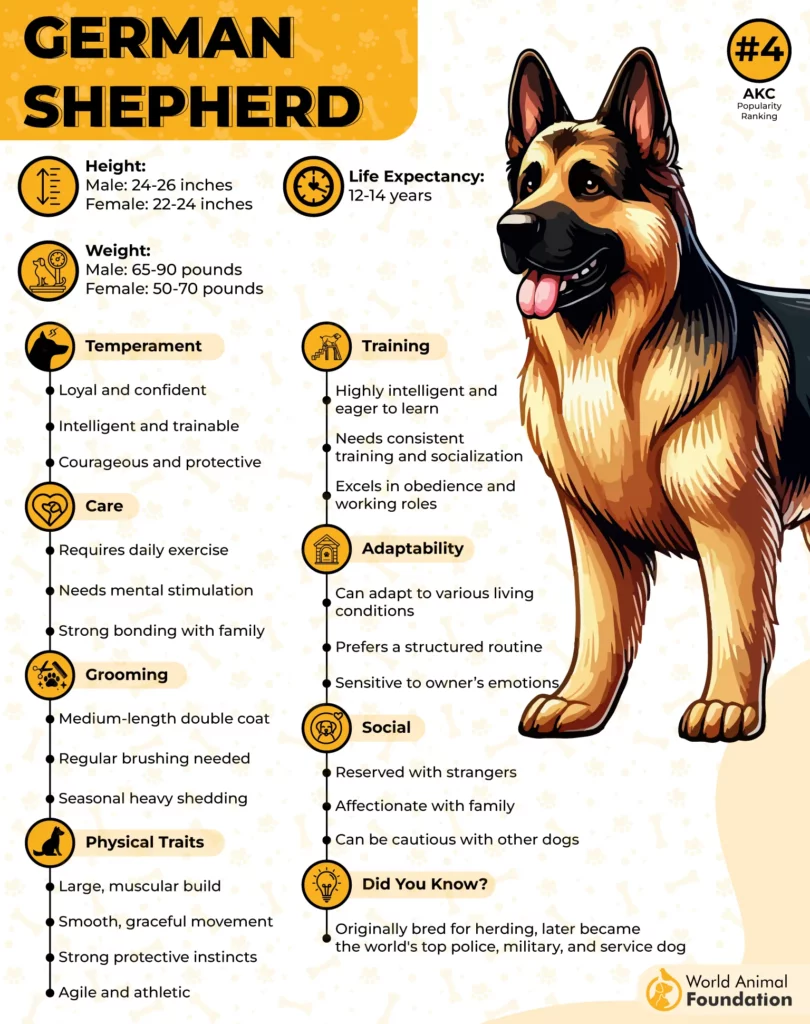
Bred in the late 19th century for their intelligence and work ethic, German Shepherds have excelled in roles that require both physical ability and emotional control.
As noted by Britannica, their jobs have included:
Herding: Early roles required calmness around livestock, not aggression.
Police work: Despite the tough image, police dogs must be even-tempered and reliable under pressure.
Guarding: Their presence alone can be a deterrent, but a well-socialized dog won’t act unless they feel threatened.
A well-socialized German Shepherd may warmly greet guests and remain calm unless their owner shows distress. In contrast, an under-socialized dog may react to every visitor as a threat. The key is consistent training and helping the dog distinguish between real danger and everyday encounters.
Health and Aggression: Is There a Link?
German Shepherds aren’t prone to conditions like rage syndrome or cognitive dysfunction that could lead to unprovoked aggression. However, they can develop epilepsy, and untreated seizures have been linked to behavioral issues. If you’re considering a puppy, ask breeders about any family history of epilepsy.
If your dog begins acting aggressively out of nowhere, it’s time for a vet visit. Pain or an undiagnosed medical condition could be behind the behavior shift.
4. American Bulldog
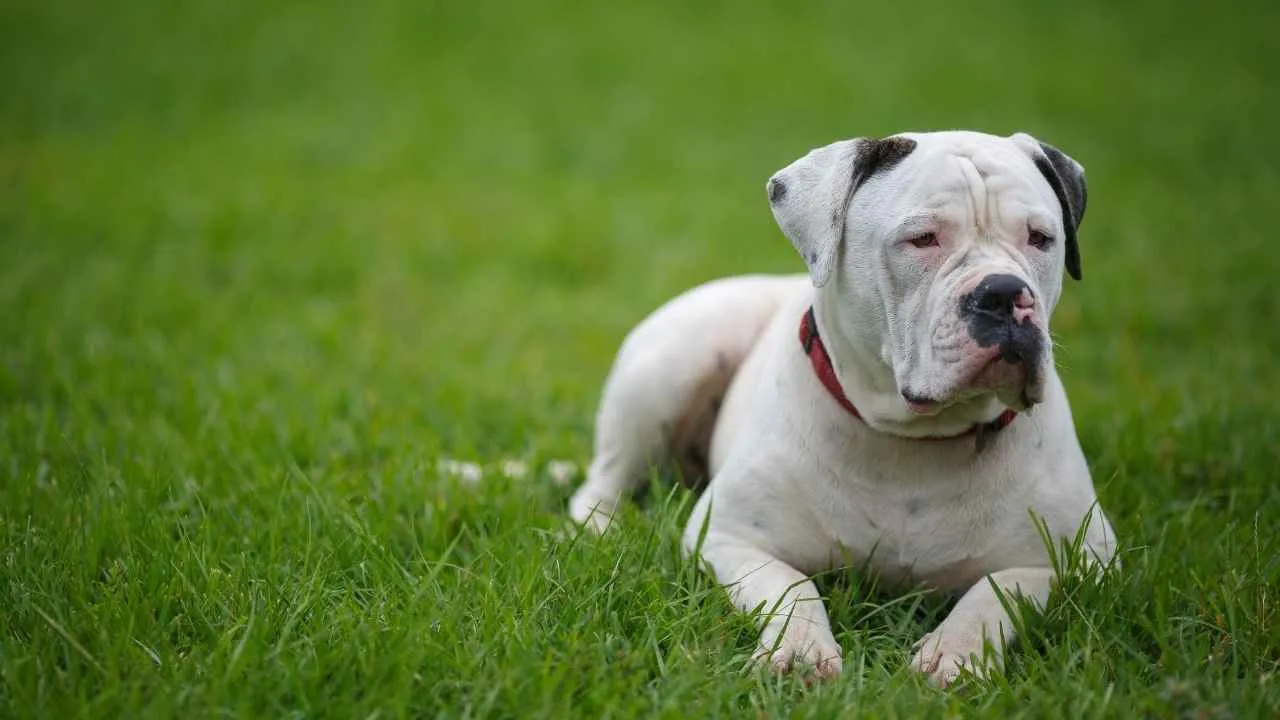
While the American Kennel Club (AKC) refers to them simply as “the bulldog,” it’s important to clarify that these Bulldogs are distinct from breeds like the English Bulldog, French Bulldog, or Bullmastiff.
Originally bred for bull baiting—a brutal sport that demanded strength and fearlessness—English Bulldogs were once far more aggressive. But after the sport was outlawed over two centuries ago, breeders worked to reshape the bulldog’s temperament, selecting for friendly, loyal traits instead. This shift turned them into the gentle, stocky companions many families love today.
What may cause Bulldog Aggression?
American Bulldogs are known for their strong drives and dominant personalities, which can sometimes lead to aggression toward other dogs. While they often enjoy rough-and-tumble play as puppies, this behavior can escalate as they mature, typically around 1 to 2 years of age. In particular, unneutered males tend to have a hard time getting along with other males, making early socialization and supervision essential.
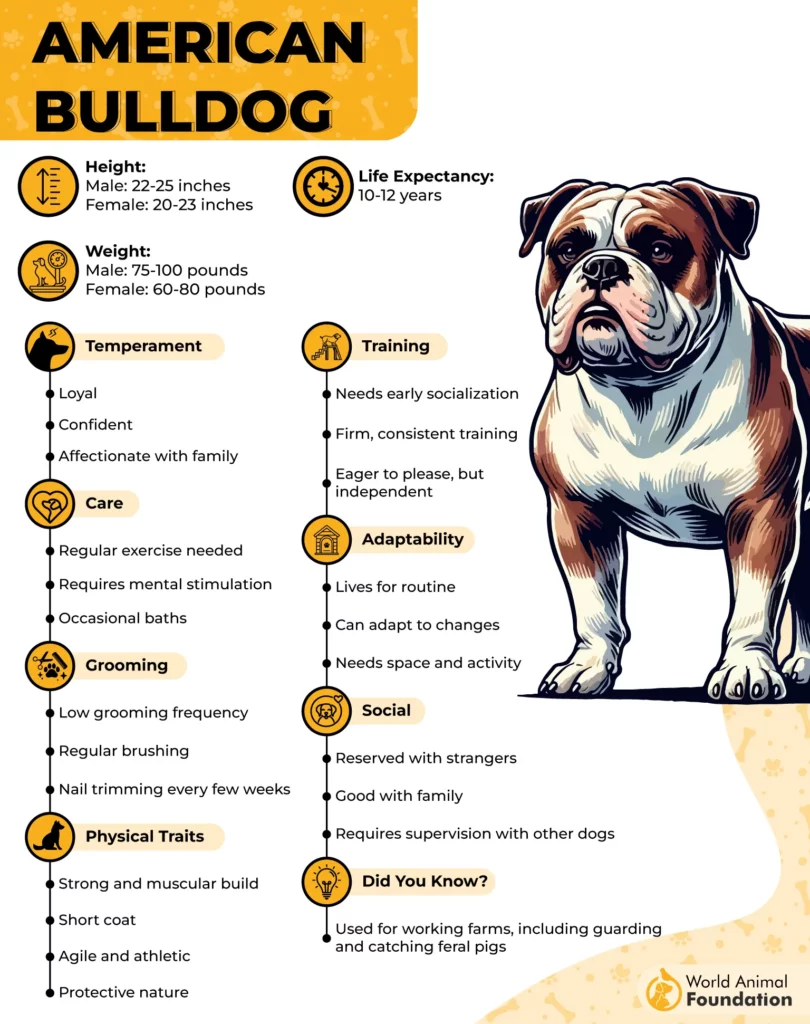
In some U.S. states like New Jersey, dog bite laws specifically address incidents involving American Bulldogs due to their size and strength.
Victims of an American Bulldog attack in New Jersey may be eligible to sue for:
Medical expenses and lost income
Emotional distress and pain
Long-term disability or loss of companionship
Because of their potential risk, American Bulldogs are often grouped with pit bulls and Rottweilers in insurance exclusions. Homeowners who don’t disclose their pet’s breed risk losing coverage entirely if an incident occurs.
5. Bullmastiff
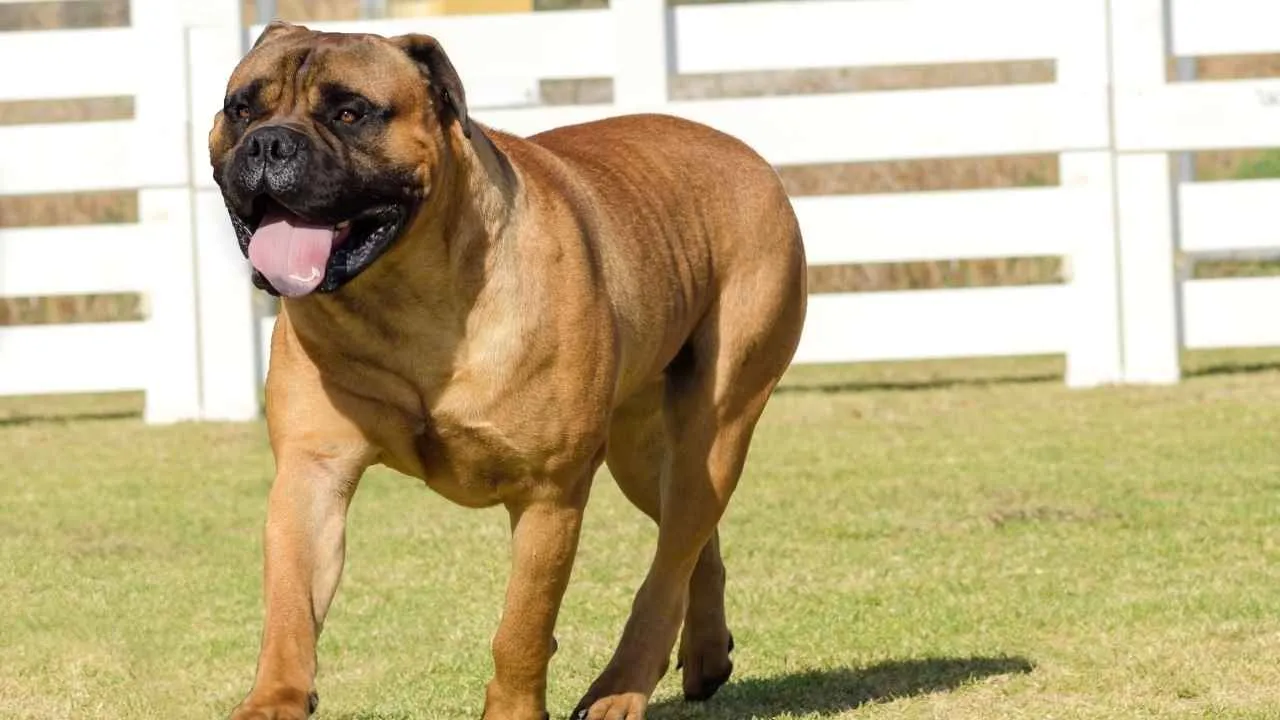
Bullmastiffs are often referred to as gentle giants thanks to their calm and affectionate nature. Yet, like any large dog, they can become dangerous under certain circumstances.
When a Bullmastiff bites, the consequences can be serious due to their sheer size and impressive bite strength. Their bite force is estimated to range between 556 and 600 PSI (pounds per square inch), delivering a powerful impact. Although they’re no longer officially classified as guard dogs, Bullmastiffs still possess strong instincts and a commanding physical presence.
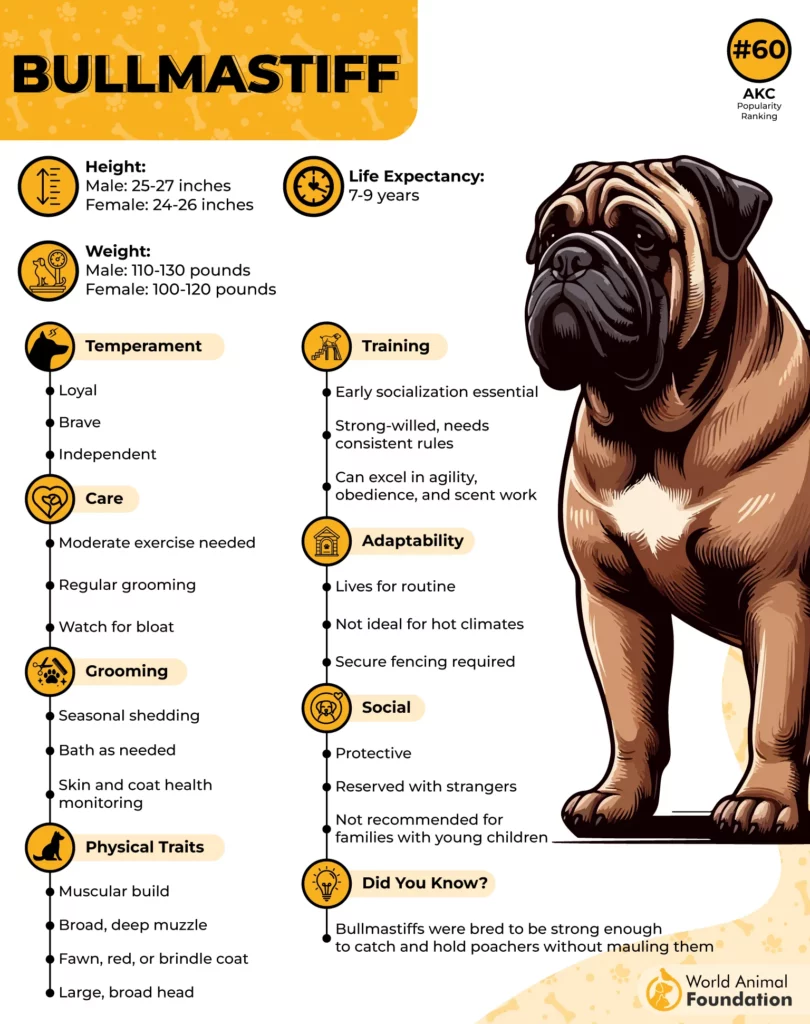
Although many Bullmastiffs are well-behaved companions, it’s important to remember that no breed is completely free from the potential for aggression. And when a dog this large reacts aggressively, the consequences can be devastating.
How Dangerous Is a Bullmastiff Bite?
Bullmastiffs rank among the strongest domesticated dog breeds. Their bites can cause:
Bone fractures and torn muscles or ligaments
Severe bleeding and nerve damage
In extreme cases, life-threatening injuries
Recovery can involve emergency surgery, extended rehabilitation, and long-term emotional trauma. Many bite victims also struggle with lasting scars or PTSD after an attack.
Why Children Are Most at Risk
According to the CDC, over 4.7 million dog bite incidents occur each year in the U.S., and nearly 20% of victims need immediate medical attention. Children aged 5 to 9 years old are the most frequent victims.
Young kids often don’t understand the need for boundaries with animals. Their natural instinct to hug or kiss a dog, especially around the face or neck, can unintentionally provoke a defensive reaction from a dog, even one with no history of aggression.
Because children are smaller and more vulnerable, their injuries from dog attacks tend to be more serious, particularly in areas like the head, neck, and face, which are at the same level as most dogs’ mouths.
6. Doberman Pinscher
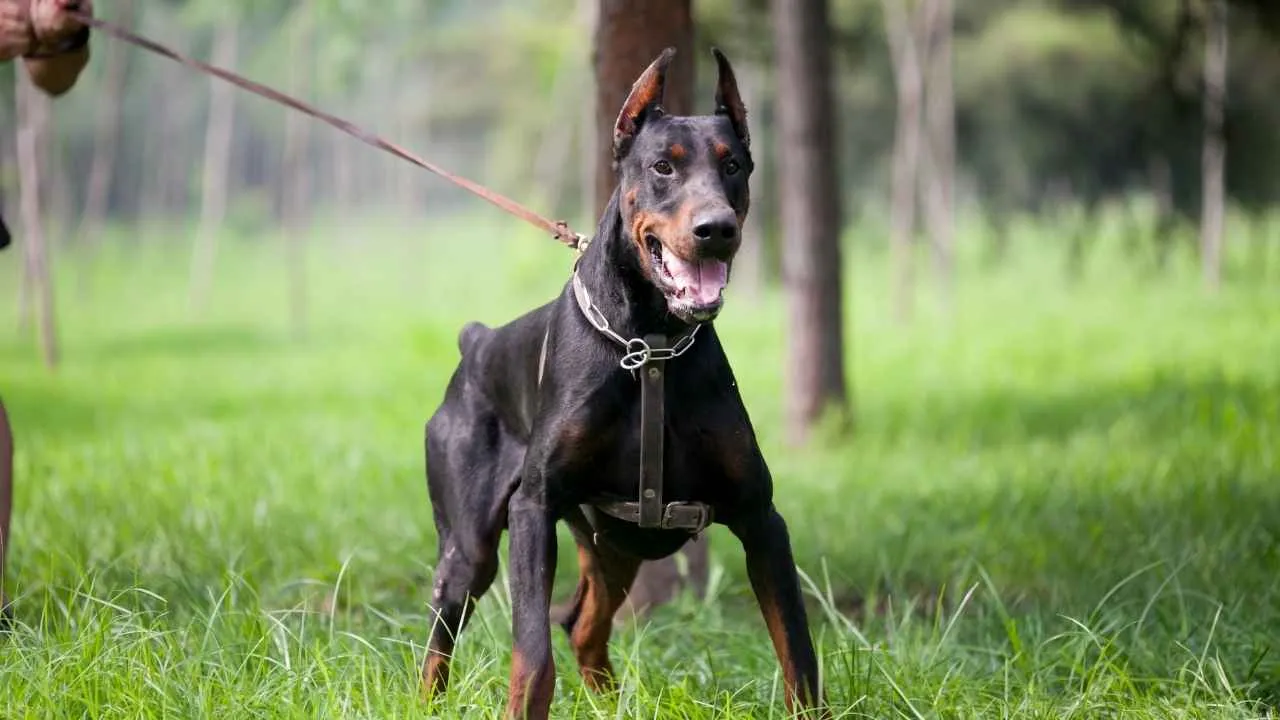
Dobermans are often admired for their sleek appearance, intelligence, and loyalty. But behind their alert gaze lies a breed with a strong guarding instinct—one that can turn dangerous in the wrong circumstances. Even under responsible ownership, any dog can bite, and Dobermans, given their history and build, can inflict serious injuries.
As noted by WebMD, the Doberman was developed in Germany in the 1890s by a tax collector seeking a reliable guard dog. This new breed combined traits from Rottweilers, Terriers, German Pinschers, Weimaraners, and shepherds—resulting in strong, highly intelligent and loyal breed.
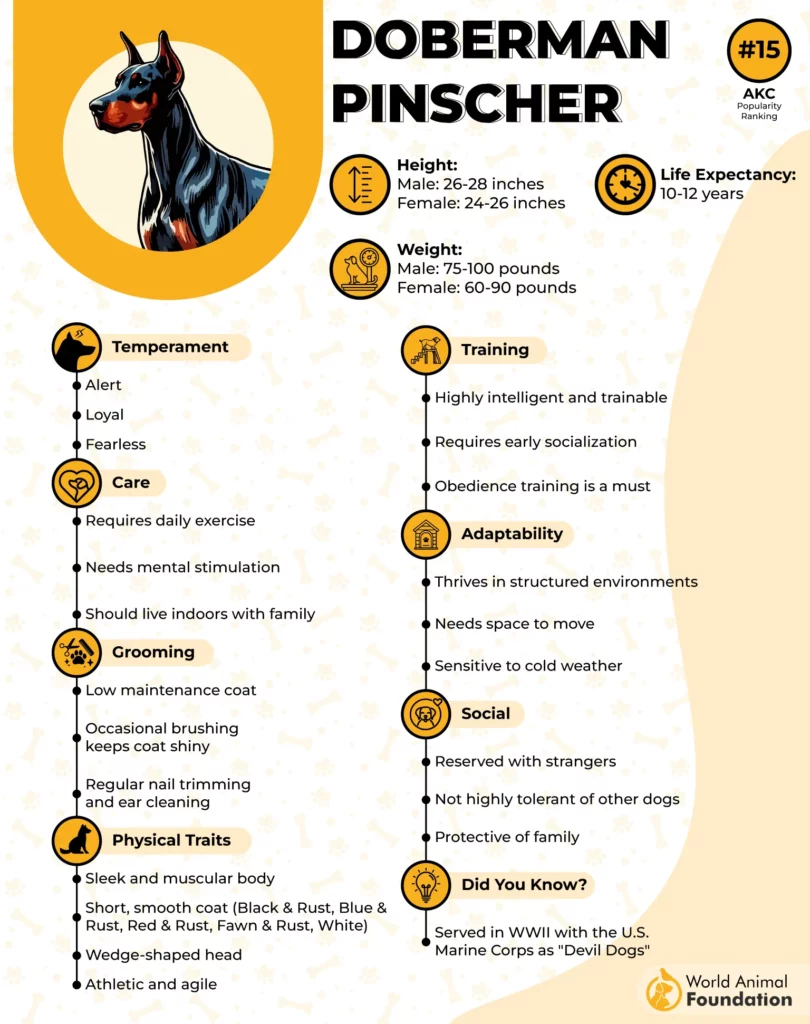
From early on, Dobermans were valued for more than companionship. Their intelligence and alertness made them ideal for roles in military, police, and search and rescue and as personal protection dogs. In both World Wars, Dobermans served bravely as sentries, scouts, and even mine detectors.
Intelligence and Aggression: A Double-Edged Sword
Dobermans rank among the smartest breeds, often compared with German Shepherds and Border Collies. They’re quick learners and excel in basic obedience training—traits that make them good guard dogs.
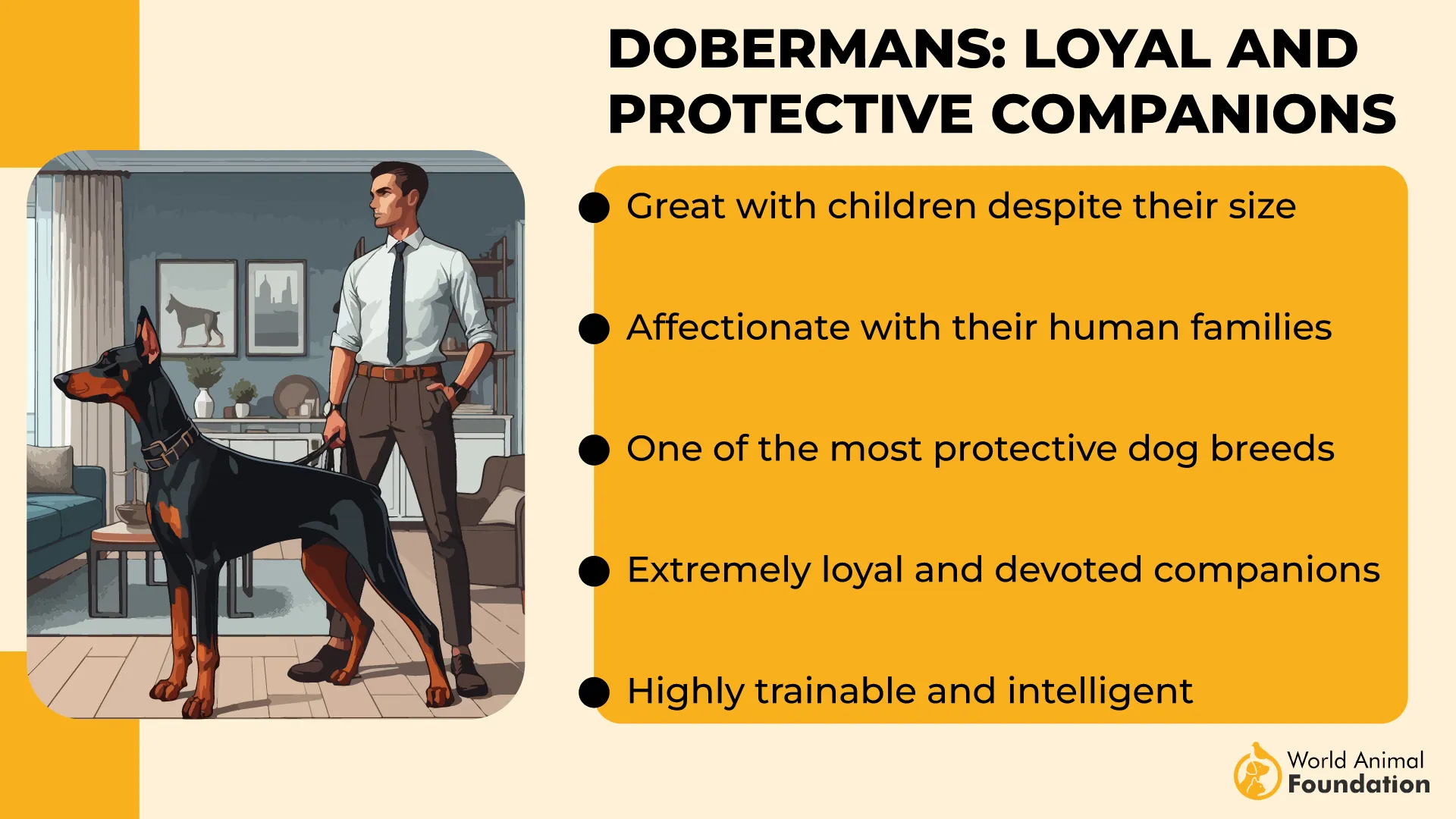
However, this intelligence, paired with a protective nature, can become problematic. Many Dobermans are bred for security and will defend their owners fiercely, sometimes without waiting for a command. While well-trained dogs respond only on cue, undertrained or mistreated Dobermans may react instinctively to perceived threats.
Though once widely used in police and military work, Dobermans have largely been replaced by German Shepherds and Belgian Malinois. Some agencies have found them too intense or “high-strung” for modern police work. Today, they’re more commonly kept as guard dogs or protective companions than official service animals.
Bite Strength and Attack Statistics
Dobermans have a bite force estimated at 230 to 305 PSI (pounds per square inch)—comparable to German Shepherds. While not the strongest among large breeds, their speed, agility, and determination make their attacks especially dangerous.
Between 1982 and 2022, there were at least:
23 recorded attacks involving Dobermans
12 incidents involving children
8 fatal attacks and 12 maimings
Despite being less common than some breeds in attacks, the severity of Doberman bites can be significant.
Poor training, abuse, or encouragement of aggressive tendencies can lead to dangerous behavior and unfortunate outcomes. Some retired military or police Dobermans may struggle to adapt to life as household pets, especially if they’ve been involved in violent situations.
7. Akita

Akitas are known for their loyalty, alertness, and protective nature. These dogs typically bond deeply with their family but remain distant or suspicious of strangers. Calm and composed as adults, Akitas aren’t overly playful unless they’re relaxed and at ease with their loved ones.
Pawlicy Advisor states Akita’s strong protective instincts can sometimes lead them to misread harmless actions as threats. Because of their size, strength, and independent streak, Akitas may not be the ideal family dogs if there are small children or elderly individuals.
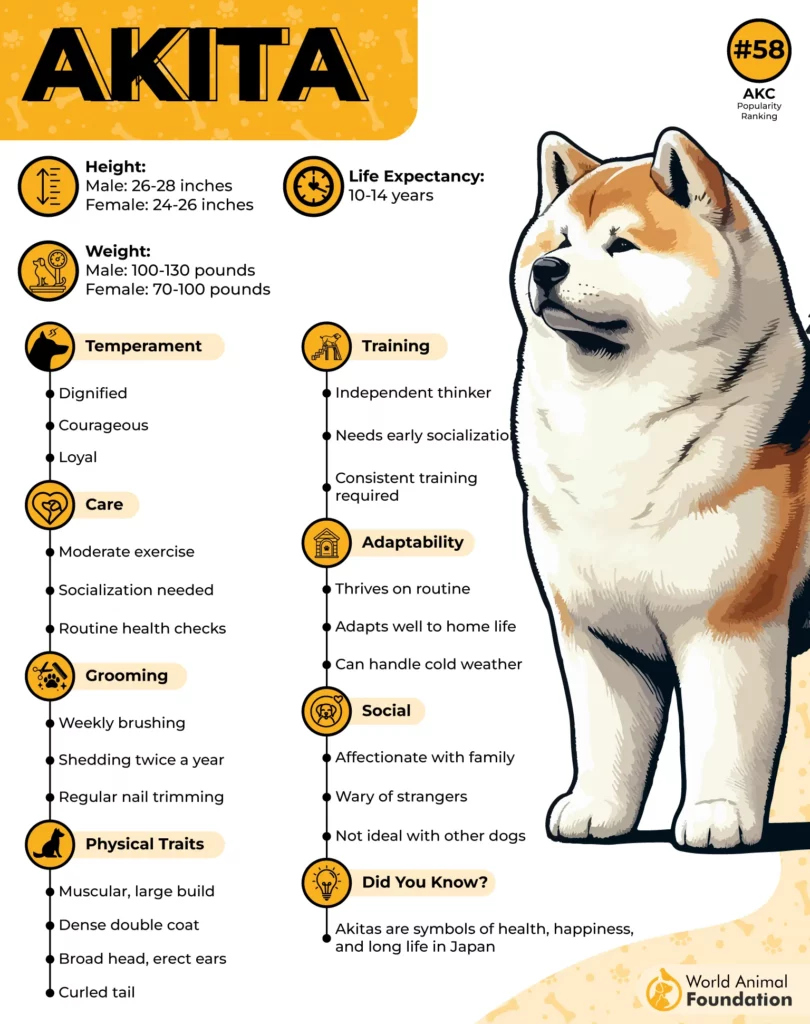
They can show aggression toward other dogs, especially of the same sex. While generally trainable, their strong-willed personality means they respond best to consistent, respectful training methods.
⚠️ Keep in mind: Every dog is unique. While these traits are commonly observed in the breed, individual behavior may vary depending on upbringing and environment.
Dog Bites and Children – A Risky Combination
According to the Centers for Disease Control, around 4.7 million dog bites occur annually in the U.S. Children aged 5 to 9 are the most frequent victims of dog bites, and injuries in this group tend to be more severe.
Kids often approach dogs without understanding personal space, hugging them tightly or getting too close to their faces. When paired with a dog that’s protective or anxious, such innocent actions can trigger an aggressive response.
Akita Attack Incidents: What History Tells Us
Despite their popularity across the U.S., Akitas are considered among the more dangerous breeds by several insurance companies and have been affected by breed-specific laws in some states. Their strong-willed nature, territorial instincts, and large size can create risks—especially in untrained or poorly socialized dogs.
In 2018 (Pennsylvania), two children were attacked by a pair of Akitas while walking home from school. Thankfully, the attack was interrupted by nearby drivers honking their horns. The dogs had escaped through a forced-open gate, though the exact reason behind their aggression remains unclear.
While not all Akitas are dangerous, these cases highlight the importance of responsible ownership, early socialization, and understanding a dog’s behavioral history, especially with strong, independent breeds like the Akita.
Conclusion
Understanding the behavior and risks associated with attack dog breeds is crucial for any prospective owner, especially first-time dog owners. At the same time, protection dogs like the American Pit Bull Terrier, Presa Canario, and Chow Chows are often considered dangerous due to their aggressive tendencies and high prey drive.
It’s important to recognize that many other dangerous dog breeds—including massive dogs like Great Danes and Alaskan Malamutes, as well as sled dogs like Siberian Huskies—can also exhibit serious attacks or dangerous behaviors if not properly managed. Mixed breeds and wolf hybrids add further complexity to predicting a dog’s behavior.
These breeds were often developed to protect livestock or serve as following dogs, but their strong instincts may pose challenges around smaller animals or other pets. Ultimately, responsible ownership and understanding a dog’s natural traits can help reduce risks, making it safer for families and communities alike.


